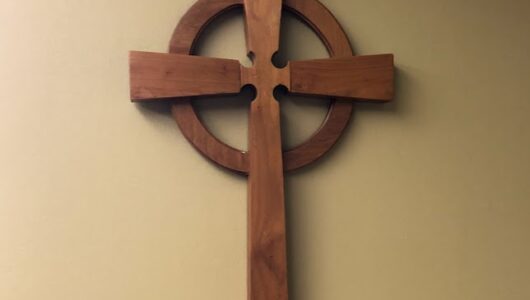The cross many people know as the Presbyterian cross has its roots in the Celtic tradition and the Scottish Reformation.
The Celtic cross is characterized by a circle around the intersection of the arms of the cross and may also be decorated with details like interlacing patterns or knots. This design emerged in early Christian Ireland and Scotland around the 5th-8th centuries.
It blended Christian symbolism with pre-Christian artistic traditions, possibly serving as a way to facilitate the conversion of pagan populations.
The circle on the cross is interpreted by some as representing eternity, the sun, or the cycle of life and death.
During the Scottish Reformation in the 16th century, the Presbyterian Church established itself as a distinct branch of Protestantism. Seeking to distinguish themselves from the Catholic Church and its elaborate rituals, the Presbyterians adopted a simpler and more symbolic approach to religious practices and imagery. The cross rather than the crucifix was used to emphasize the resurrection rather than the crucifixion.
The Celtic cross resonated with this approach as it was both recognizable within the Christian context and distinct from Catholic symbolism. The use of the Celtic cross by the Presbyterian Church became a way to express or theological beliefs and historical identity.
Modern usage
Today, the Presbyterian cross remains a significant symbol for the Presbyterian Church around the world.
The one pictured in this post is in Upper Witherspoon on the FUPC campus. We are collecting and exploring all the crosses of FUPC during this Lenten season as we “Lift High the Cross.”


